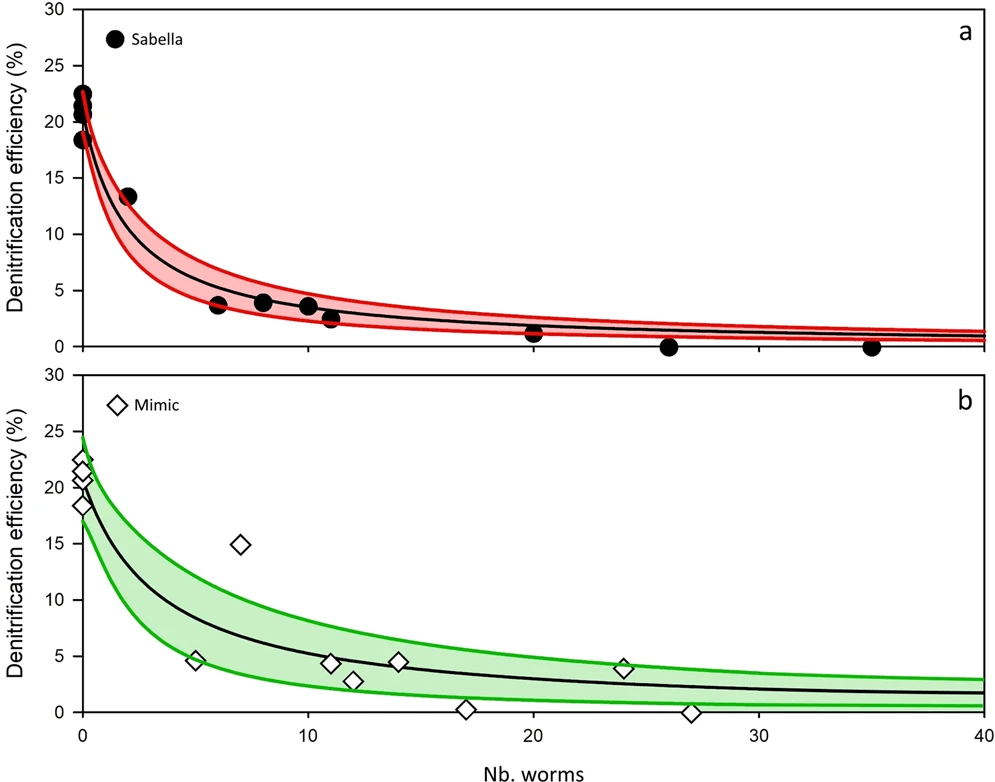Ecosystem impacts of the Mediterranean fanworm

The Mediterranean fanworm is considered an ecosystem engineer because it can form dense clusters that change the physical and biological characteristics of the environment around them. The long, leathery tubes are colonized by a range of organisms and provide refuge for smaller prey from predators. Dense aggregations of the tubes can affect the movement of water near the seafloor while living worms filter large amounts of organic matter from the surrounding water. To tease out the ecological effects of the fanworms from the tubes that they construct, the scientists created experimental plots of living worms and tube mimics at different densities on the seafloor, ranging from 0 to 50 individuals per square meter. They then measured changes in the sediments, nutrient cycling and denitrification (a process that removes bioavailable nitrogen from marine environments), and in the composition of bacterial and faunal communities over a six-month period.
The results showed that increasing abundance of the fanworms caused significant changes in benthic ecosystem structure and had important implications for the capacity of benthic communities to process and remove nitrogen. The living fanworms and mimic tubes created significant, but quite distinct shifts in the surrounding microbial and faunal communities suggesting that both the physical structure of the tubes and the biological activity of the worms had impacts on the ecosystem. Increasing densities of the fanworms and mimics greatly increased ammonium and nitrate flux from the sediment and reduced the removal of nitrogen (N2) to the atmosphere. This reduction in the efficiency of denitrification may place further strain on coastal waterways that are already burdened with high levels of organic pollution.
Read the articles
Atalah J, Floerl O, Pochon X, Townsend M, Tait L and Lohrer AM (2019) The introduced fanworm, Sabella spallanzanii, alters soft sediment macrofauna and bacterial communities. Frontiers in Ecology and Evolution 7:481. doi: 10.3389/fevo.2019.00481
Tait, L.W., Lohrer, A.M., Townsend, M., Atalah, J., Floerl, O., Inglis, G.J. (2020) Invasive ecosystem engineers threaten benthic nitrogen cycling by altering native infaunal and biofouling communities. Scientific Reports, 10(1): 1581. 10.1038/s41598-020-58557-8